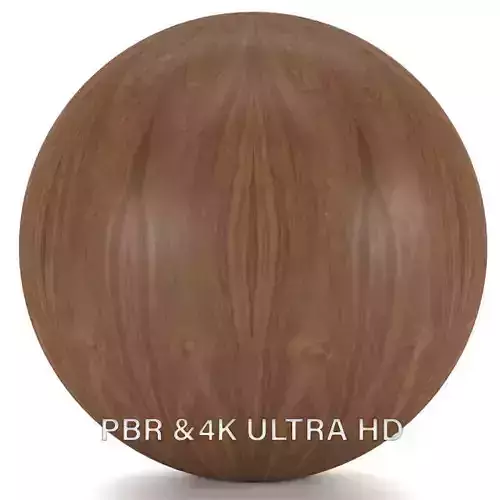1/24
Wood PBR 4K Ultra HD
TEXTURES
- AO
- Diffuse
- Displacement
- Gloss
- Normal
- Specular
RED, BROWN,Cream
4096*4096 It is a combination of two types of wood
Physically based rendering (PBR) is an approach in computer graphics that seeks to render graphics in a way that more accurately models the flow of light in the real world. Many PBR pipelines have the accurate simulation of photorealism as their goal. Feasible and quick approximations of the bidirectional reflectance distribution function and rendering equation are of mathematical importance in this field. Photogrammetry may be used to help discover and encode accurate optical properties of materials. Shaders may be used to implement PBR principles.
ProcessPBR is, as Joe Wilson puts it, more of a concept than a strict set of rules[3] – but the concept contains several distinctive points of note. One of these is that – unlike many previous models that sought to differentiate surfaces between non-reflective and reflective – PBR recognizes that, in the real world, as John Hable puts it, everything is shiny.[4] Even flat or matte surfaces in the real world such as concrete will reflect a small degree of light, and many metals and liquids will reflect a great deal of it. Another thing that PBR models attempt to do is to integrate photogrammetry - measurements from photographs of real-world materials - to study and replicate real physical ranges of values to accurately simulate albedo, gloss, reflectivity, and other physical properties. Finally, PBR puts a great deal of emphasis on microfacets, and will often contain additional textures and mathematical models intended to model small-scale specular highlights and cavities resulting from smoothness or roughness in addition to traditional specular or reflectivity maps.
SurfacesPBR topics that deal with surfaces often rely on a simplified model of the bidirectional reflectance distribution function (BRDF), that approximates well optical properties of the material using only handful of intuitive parameters, and that is quick to compute on a computer. Common techniques are approximations and simplified models, that try to fit approximate models to more accurate data from other more time consuming methods or laboratory measurements
*Reflection in computer graphics is used to emulate reflective objects like mirrors and shiny surfaces.*Accurate reflections can be accomplished e.g. by a ray trace renderer by following a ray from the eye to the mirror and then calculating where it bounces from, and continuing the process until no surface is found, or a non-reflective surface is found. Approximate reflections can usually be computed faster by using methods such as environment mapping. Reflection on a shiny surface like wood or tile can add to the photorealistic effects of a 3D rendering.
**Diffuse reflection**Diffuse reflection is the reflection of light or other waves or particles from a surface such that a ray incident on the surface is scattered at many angles rather than at just one angle as in the
case of specular reflection. An ideal diffuse reflecting surface is said to exhibit Lambertian reflection, meaning that there is equal luminance when viewed from all directions lying in the half-space adjacent to the surface.
A surface built from a non-absorbing powder such as plaster, or from fibers such as paper, or from a polycrystalline material such as white marble, reflects light diffusely with great efficiency. Many common materials exhibit a mixture of specular and diffuse reflection.
The visibility of objects, excluding light-emitting ones, is primarily caused by diffuse reflection of light: it is diffusely-scattered light that forms the image of the object in the observer's eye.
REVIEWS & COMMENTS
accuracy, and usability.
























